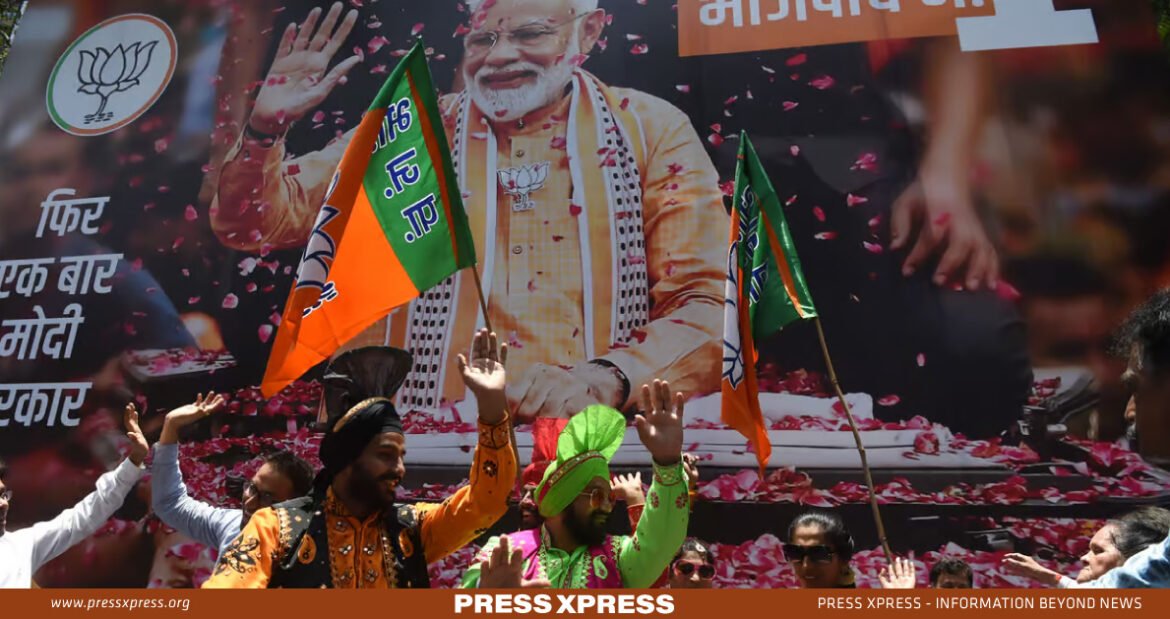In 2014, When the Modi-led NDA government took power, the Indian economy was exhibiting tell-tale signs of deep distress emanating from multiple ‘wrong turns’ in policies. But in 2024, India’s surprising success stories make the past things past.
“It is now appropriate to look at where we were then till 2014 and where we are now,” Indian Finance Minister Nirmala Sitharaman recently said while presenting a ‘White Paper’ on the Indian Economy’ in the Lok Sabha.
India has consistently outperformed market predictions, establishing itself as one of the world’s fastest-growing economies. Prime Minister Narendra Modi attributes this impressive growth to the initiatives of his Bharatiya Janata Party (BJP). With general elections looming between April and May, Modi and the BJP are vying to retain their governance.
Upon assuming power in 2014, the BJP government acknowledged the critical need for systemic reforms to propel India’s development and strengthen its macroeconomic base. From leading a digital revolution to eradicating open defecation, from achieving full vaccination coverage with homegrown vaccines to diversifying exports significantly, India has reached impressive milestones under Prime Minister Narendra Modi’s rule.
‘Fragile 5’ to ‘Top 5’
In last year’s Independence Day speech, Narendra Modi made a bold pledge: India would become a developed economy by 2047, when it celebrates 100 years since its founding.” The vow would have seemed a bluff a decade ago. In 2013, Morgan Stanley categorized India as one of the ‘Fragile Five,’ a term for emerging-market economies heavily dependent on foreign investment and grappling with significant current account deficits. Fast forward ten years, now India has captured the attention of global investors and trade partners. It stands out as one of the fastest-growing major economies and an essential “China plus one” alternative for businesses looking to mitigate risks associated with Beijing’s political climate.

India has ascended to become the world’s fifth-largest economy, outstripping the United Kingdom, Italy, France, and Canada in terms of GDP over the past decade. The nation’s economic trajectory has been remarkable during the BJP’s tenure, with substantial growth rates defying expectations, save for minor setbacks due to the Covid pandemic.

According to India Ratings and Research (Ind-Ra), India is on the cusp of transitioning to an upper-middle-income nation, with a projected per capita income of $4,466 between the fiscal years 2033 and 2036, as announced on Monday, March 11.
Previously categorized by the World Bank as a low-income country until 2006, India progressed to a lower-middle-income country in 2007 and has maintained that status since. As of 2022, India’s per capita GDP was $2,390. Countries with per capita incomes ranging from $4,466 to $13,845 are classified as upper-middle-income economies.
In the last quarter of 2023, India’s economy experienced its most vigorous expansion in 18 months, driven by strong manufacturing and construction sectors. During the October-December timeframe, the economy grew by 8.4%, surpassing the 6.6% growth anticipated by economists and the 7.6% increase from the previous quarter.
This robust economic performance, revealed just before the May elections, could significantly improve Modi’s re-election prospects, especially since high economic growth has been a cornerstone of his campaign.
Inflation and Unemployment
Since 2014, India has witnessed a significant stabilization in inflation rates. Initially, the inflation rate hovered around 8.33%, which was well above the Reserve Bank of India’s (RBI) acceptable range of 2-6%. However, under the governance of the Modi administration, inflation has largely remained within this target zone. Despite a spike to 7.7% in April 2022, attributed to the Russia-Ukraine conflict, inflation has since moderated to 4.7% as of April 2023.
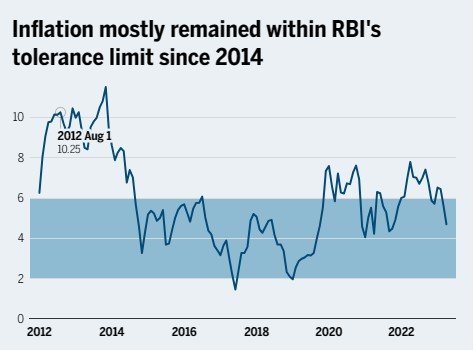
On the employment front, the situation has been mixed. When Prime Minister Modi took office in 2014, the unemployment rate stood at 5.4%. According to the Center for Monitoring Indian Economy (CMIE), this figure peaked at 8.72% in January 2016. Recent government data indicates a downward trend, with the unemployment rate for individuals aged 15 and above in urban areas falling to 6.8% during January-March 2023, down from 8.2% the previous year, as reported by the National Sample Survey Office (NSSO).
Contrasting the government’s claims, Bahutva Karnataka, a collective of citizens and organizations, published a report on March 11, 2024, titled ‘Employment, Wages and Inequality’. This report challenges the BJP’s assertion of generating two crore new jobs annually.
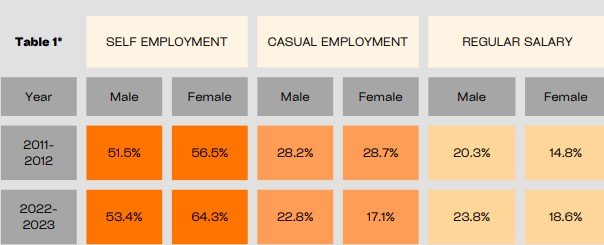
Nonetheless, the landscape of self-employment has expanded between 2011-12 and 2022-23. Currently, over half of the male workforce and more than two-thirds of the female workforce are self-employed. The growth in self-employment is seen as a positive development for the economy, fostering entrepreneurship and supporting the ‘Make in India’ initiative launched in 2014, aimed at establishing India as a premier global hub for manufacturing and investment.
Poverty Reduction and the Rise of Middle Class
India’s battle against extreme poverty has seen significant progress under Prime Minister Modi’s leadership. World Bank data reveals a decline in the population living in extreme poverty from 18.7% in 2015 to 12% in 2021, with both urban and rural areas experiencing a reduction below the international poverty line of $2.15 a day. This success is attributed to the government’s efficient welfare schemes, including a major food grain program benefiting over 813 million people, extended for five more years since its inception during the Covid-19 pandemic.
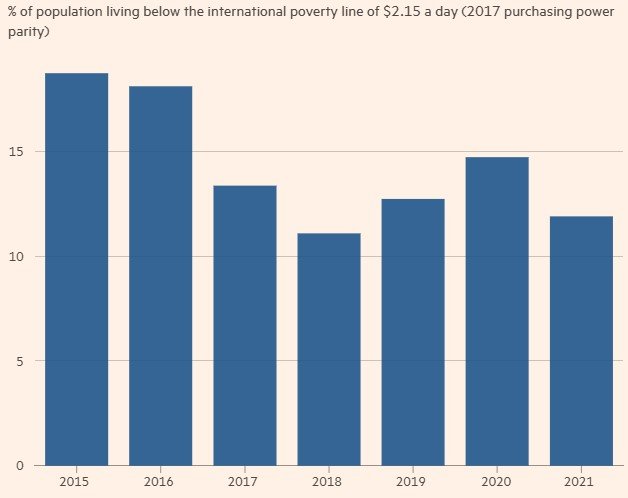
Krishnamurthy Subramanian, IMF’s executive director and former economic advisor to Modi, highlights the government’s focus on effective welfare delivery. The establishment of over 500 million bank accounts for the poor, integrated with Aadhaar’s biometric system, has streamlined welfare distribution and curbed leakages.
Furthermore, India’s rapid economic growth has significantly expanded the middle class. Research by People Research on India’s Consumer Economy indicates that the middle class, defined by an annual income of Rs500,000-Rs3 million ($6,700-$40,000), has seen remarkable growth since 2014.
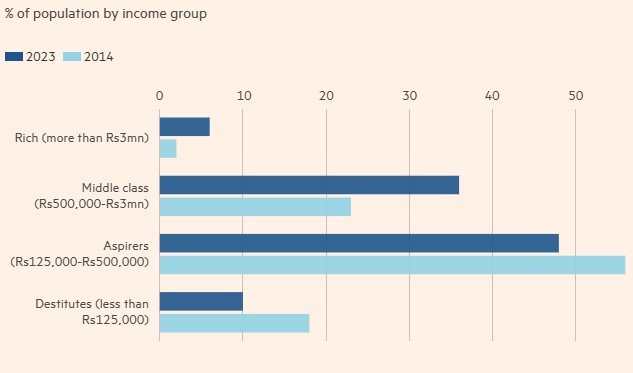
The affluent segment has tripled in size, while the middle class has surged from 300 million to 520 million, reflecting the country’s burgeoning economic landscape.
Making India A Welfare State
The BJP’s welfarism is rooted in its core value of Antyodaya (no one is left behind), which guides its vision of inclusive development for all. This value was inspired by Deendayal Upadhyaya, a founding leader of the BJP, and is reflected in PM Modi’s slogan of ‘Sabka Saath, Sabka Vikas (with everyone, for everyone’s development)’.
Before 2014, millions of Indian households lacked basic services like electricity, water, sanitation, housing, and banking. But in the last ten years, the BJP has made big strides to ensure that every citizen, regardless of their caste, religion, gender, or political affiliation, can access the schemes they are entitled to.
From Swachh Bharat Mission, Jan Dhan Yojana, Ujjwala Yojana to Ayushman Bharat Pradhan Mantri Jan Arogya Yojana, Startup India, to name a few, his historic decisions and policymaking ideas have weaved India into a newer outlook in front of the world- a strong developing nation. Narendra Modi has brought newer concepts to the limelight along with the notable schemes that have seeped into the deeper levels of the Indian societal structure- financial, healthcare, and social security.

In a nation, where according to Modi, a mere 15 paise out of ₹1 sent from Delhi reached the poor, the incumbent government has taken concrete steps such as shifting to direct benefit transfers (DBTs) to plug leakages in welfare provisioning. This focus on maximizing coverage is what makes the BJP’s model of welfarism distinct from those of other parties.
Under Modi’s initiative in recent years, more than 30 million families got a new home under the PM Awas Yojana program, 120 million farmers benefitted from the PM Kisan Samman Nidhi, 800 million have been receiving ration since the pandemic started, 450 million citizens opened their first bank account through the Jan Dhan Yojana, and 90 million households got their first LPG cylinder through the Ujjwala Yojana.
To name a few, Sansad Adarsh Gram Yojana (SAGY) promotes the social and cultural development of villages. It aims to realize Mahatma Gandhi’s vision of an ideal Indian village. Gramoday se Bharat Uday (GBU) focuses on the development of villages as the foundation of the country. Pradhan Mantri Garib Kalyan Anna Yojana (PMGKAY) provides free food grains to the poorest citizens through the Public Distribution System (PDS).
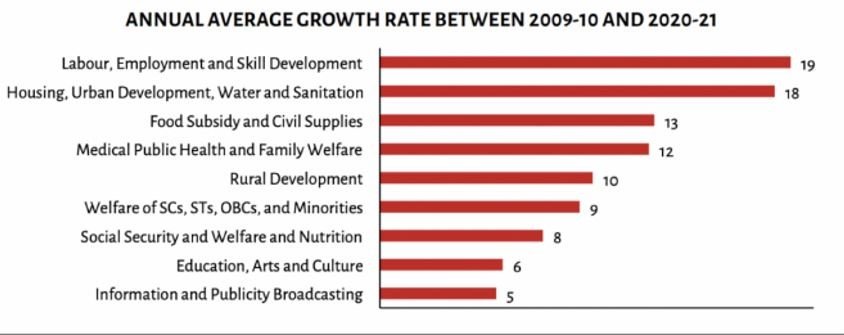
Atal Pension Yojana, (APY) provides a monthly pension for people from the unorganized sector between 18 to 50 years. PM Ujjwala Yojana, (PMUY) has delivered more than 9 Crore free LPG connections to BPL families at subsidized rates. Pradhan Mantri Street Vendor’s Atmanirbhar Nidhi scheme, (PMSVA Nidhi Scheme) helped to improve the life standard of the street vendors. Pradhan Mantri Awas Yojana (PMAY) constructed more than 3 Crore houses and provided them at an affordable price to the deprived section of the country.
PM Jan Arogya Yojana, (PMJAY) provides Rs. 5 Lakhs per family per year for free and quality healthcare services to vulnerable families. Today almost every household in India has a water facility and this is due to the Jal Jeevan Mission under which 50% of households have a water connection.
These initiatives over the years have played a vital role in promoting the welfare of the poor people, empowering women, aiding the farmers, creating job opportunities, upskilling people, and thereby ameliorating the Indian economy at large. These flagship programs have moved way beyond the statistics and the positive impact of them could be seen on the smiling faces of people.
Bharat: A Vishwamitra in Making
India is poised to become the world’s most important country in the medium term. It has the largest population (which is still growing), and with a per-capita GDP that is just one-quarter that of China’s, its economy has enormous scope for productivity gains. Moreover, India’s military and geopolitical importance will only grow, and it is a vibrant democracy whose cultural diversity will generate soft power to rival the US and the UK.
India’s foreign policy, under PM Modi’s guidance, has elevated the nation to new heights on the global stage. 100% global consensus on the New Delhi G20 Declaration, leadership in organizations like ISA and CDRI, and contributions during the COVID-19 pandemic (30 crore+ COVID-19 vaccines to 101 Countries) showcase its emergence as a global leader.
India’s achievements in digital technology, real-time digital payment transactions, and global rankings in various fields solidify its place as a key player in the international arena.
In conclusion, Prime Minister Narendra Modi’s tenure has been marked by a holistic and inclusive approach to governance. From empowering farmers and women to driving economic growth, preserving culture, and leading on the global stage, the government’s efforts have laid the foundation for a resilient, empowered, and globally respected India.

